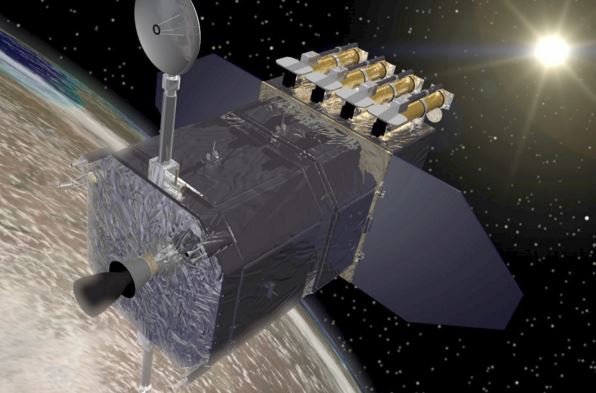The sun erupting over 12 flares on its surface has been captured on an incredible video taken by the Solar Dynamics Observatory (SDO), a NASA mission that has been observing the Sun for the past five years. The video has been released for public viewing.
In the video, viewers can watch at least a dozen minor eruptions that occurred over a 30-hour period. Our Sun has never looked so fierce and bad-tempered.
The 30-minute video, which shows the Sun in its never-seen-before glory, reveals several of its active regions, which are the main sources of solar storms.
 The SDO wrote “The images were taken in a wavelength of extreme ultraviolet light that shows activity not far above the Sun’s surface.” (Credit: Solar Dynamics Observatory, NASA.)
The SDO wrote “The images were taken in a wavelength of extreme ultraviolet light that shows activity not far above the Sun’s surface.” (Credit: Solar Dynamics Observatory, NASA.)
Humans are unable to see ultraviolet light. In this video, the 400 nm to 10 wavelengths are colored in red.
Flares and tongues of plasma lashing out
The eruptions, which occurred on November 3rd, 4th and 5th, included a number of small flares (seen as brief white flashes) and several tongues of plasma striking out as the competing magnetic forces fought with each other, NASA explained.
Launched on 11th February, 2010, the SDO is part of the LWS (Living With a Star) program, which aims to develop the scientific understanding required to effectively deal with those aspects of the connected Sun-Earth systems directly affecting human life and society.
One of SDO’s missions is to determine how the Sun’s magnetic field is structured and generated, and how it affects both life on Earth and our telecommunications systems.
The SDO is a satellite that orbits Earth, with sensors aimed at the sun. They take a number of different measurements of the Sun and solar activity. The Sun – our star – is continuously radiating energy and solar wind. Today, NASA can show us this with a new video.
 The Solar Dynamics Observatory. (Image: Wikipedia)
The Solar Dynamics Observatory. (Image: Wikipedia)
A spectacular video
According to the US space agency, it took a team of experts approximately ten hours to create each minute of video footage.
The SDO also makes it possible for NASA scientists to differentiate between the wavelengths through the assignment of specific colors, which gives us an incredibly vivid image of the surface of the Sun.
The SDO’s 4k video technology assigned each wavelength with its own unique color, which gives the film four times better resolution compared to standard HD (high-definition video).
The solar flares pose no risk to life on Earth, because they are fairly small compared to the massive coronal mass ejections (CME) or the geomagnetic storms that recently adorned our skies with beautiful Northern Lights over parts of Canada and northern Europe.
However, it is a humbling experience when we are told that the slow, grand eruptions that were filmed in a small edge of the Sun’s surface could span the width of Earth several times.
NASA Video – SDO sees active region outbursts
Here is the SDO’s close-up video showing an active region near the right-hand edge of the Sun’s disk. It erupted with more than twelve minor events over a 30-hour period.
